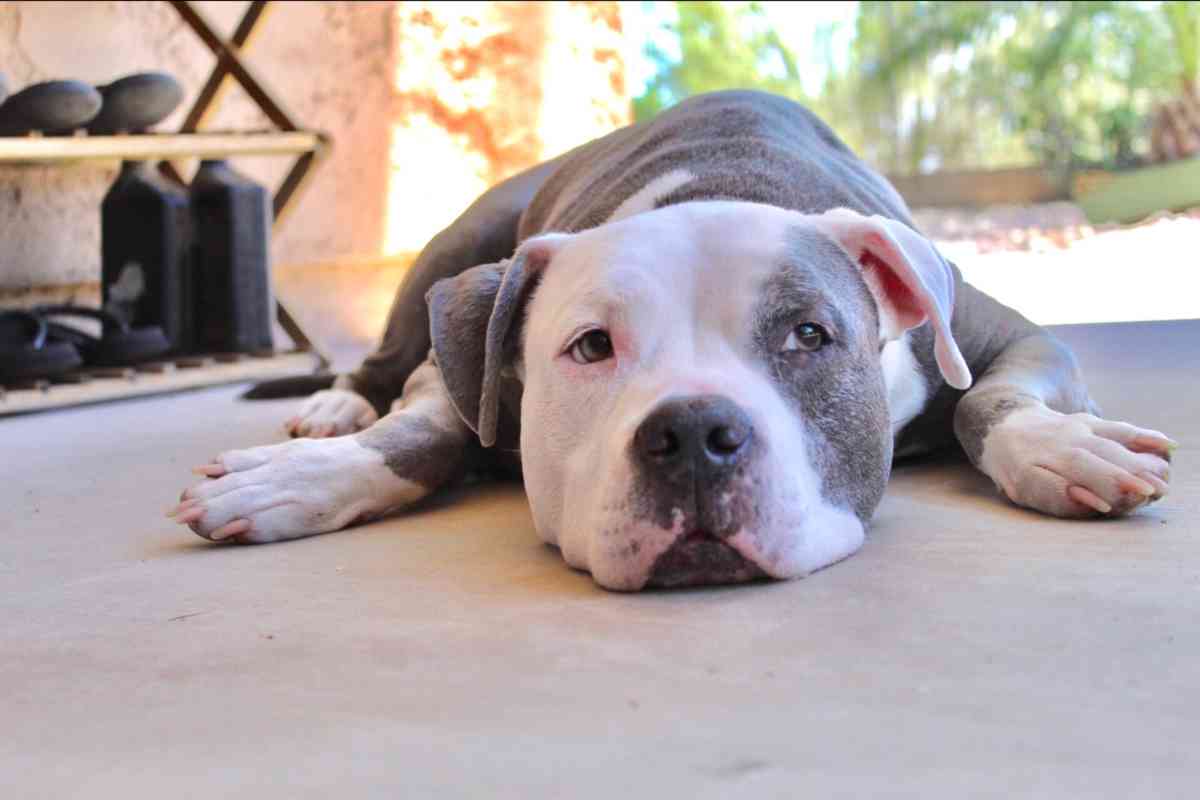Pitbull vs Labrador Retriever: How Do They Compare?
Dogs have become not only companions but also part of our lives and families. Two of the most loved breeds are the Pitbull and Labrador Retriever.

How do Pitbulls and Labradors Compare?
Perhaps one of the quickest ways to compare the two breeds is by their size. Pitbulls are generally broader and more muscular than other breeds, particularly Labrador Retrievers. Pitbulls have broad heads, pronounced jaws and bulging neck muscles; contrastingly, Labs are leaner.
To compare the two, we researched the breeds to look at the differences and similarities and what makes them common among people adopting dogs. We also reached out to dog breed experts to get their input. Have you ever wondered or wanted to know how these two breeds are compared? Well, here is an in-depth look at what we found out.
Pitbull vs Labrador Retriever: How Do They Compare?
Labrador retrievers and Pitbulls are among the most common and loved dog breeds across the globe.
To make it easier for you to understand the similarities and differences between these two unique breeds, we compared them under different parameters.
Below is a look at each breed under a specific parameter:

Breed Appearance
The easiest way to differentiate these two breeds is by looking at their appearance. This is mainly because the two breeds have distinct physical attributes.
Labrador Retrievers have a medium-sized build, with the females growing to be between 21 to 24 inches tall, while the males are slightly taller at 22 to 25 inches. After fully maturing, a Lab Retriever can be between 50 and 80 pounds.
Their coats are usually short and dense and can be yellow, black or chocolate.
Apart from being shorter, Pitbulls are also stockier than their counterparts. The females can grow between 17 and 20 inches tall, while the males can be between 18 and 22 inches tall. Typically, this dog can weigh between 30 and 60 pounds after maturity.
Pits have a coat that is smooth when you touch them. The coat is also glossy and comes in many different colors, with the most common ones being buckskin, black, red, fawn, and white.
Breed Temperament
Being outgoing, high-spirited and friendly is like a Lab Retriever. One thing you notice about this breed is how friendly and great they can be with other dog breeds, children, and people.
Also, since they love being around people, they make excellent family companions, even for people with children or large families.
However, the breed is not built to be a guard or watchdog due to their overly trusting and friendly nature.
Over the years, we have all heard people giving Pitbulls a lousy rap and saying they can be aggressive and dangerous; this is not true. Even though people used to breed dogs for fights in the past, it is essential to note that Pitbulls are not aggressive dogs by instinct.
In fact, according to dog training experts, a Pitbull can be as friendly and loving as other dog breeds with proper training and socialization.
Even though Pitbulls are a bit reserved, especially around strangers, they are still a people-oriented breed. They are also highly loyal and ready to protect their family.
Breed Exercise Requirements

Both are high-energy dog breeds, so much exercise is crucial to ensuring your Lab or Pitbull stays healthy and happy.
For Labs, it is recommended that they get at least 1.5 to 2 hours of solid exercise per day. The exercise can take them with you on a hike, a run, or even a long walk. If you have a pool, it can also be a good exercise since Labrador Retrievers love swimming, and if you do not have a pool, taking them to the lake for a swim is another option.
Furthermore, they need mental stimulation to go along with their exercise needs. Interactive games, training sessions and puzzles are an excellent way of keeping your dog’s mind sharp.
On the other hand, Pitbulls will require a little less exercise time than Labs. 1 to 1.5 hours of solid exercise per day is okay.
Additionally, Pitbulls will require mental stimulation just as Labs do.
Breed Training
Both these dog breeds are intelligent, and thus training should not be challenging. Labrador Retrievers are among the easiest breeds to train because they are always eager to please.
This is one of the main reasons why they make for excellent service dogs.
Like their counterparts, Pitbulls are also not hard to train. They are also eager to please and love being praised by their humans as much as by Labs. However, it is essential to know that they can sometimes be stubborn, so ensuring your Pitbull starts socializing and training early is crucial.
Also, remember to be patient with your Pitbull, or any other dog breed, whenever you are training them if you want them to enjoy the process.
Breed Health
Typically, the lifespan of a Pitbull is usually between 10 and 12 years, while that of a Labrador Retriever is between 11 and 13 years.
Pitbulls and Labs are generally regarded as healthy breeds; however, there are some health conditions they may be prone to.
Labs may be predisposed to some conditions, including hypothyroidism, elbow and hip dysplasia, cancer, skin problems, and seizures.
On the other hand, some of the most common conditions affecting Pitbulls include elbow and hip dysplasia, kneecap dislocation, degenerative myelopathy, and several skin conditions such as dermatitis, allergies and hotspots.
Both dog breeds can be susceptible to obesity, especially in the case of Labrador Retrievers because they tend to be food motivated compared to Pits.
As a responsible pet parent, the best way to ensure you keep your canine companion happy and healthy is to feed them the best diet possible, take them to the vet for routine checkups, and exercise them enough.
Also, their blood work needs to be done at least twice a year. This will help you discover any health problems before they get serious and give your pooch a chance to live a healthy, long, and happy life.

Breed Diet and Nutrition
Due to the fact these two breeds are highly active, they will need high-quality diets with enough fat and proteins to meet their energy requirements.
The diet should also contain fatty acids (omega 6 and 3) and the necessary minerals and vitamins for overall health.
When shopping for food for your Lab or Pit, ensure you get quality and healthy food. Look at the ingredients and the recommended details on the packages to ensure that the food has everything your dog will require and is for their age.
Please stick to the portions and rations recommended for your dog to avoid overfeeding or underfeeding them.
In most cases, 3-4 cups should be the recommended daily food quantity for a fully grown Labrador Retriever, while that of a Pitbull is 2-3 cups. If you feel the food is too much or little for your dog, consult a vet or a dog nutrition specialist for advice.
Breed Grooming Requirements
Because of their single and short coat, Pitbulls have relatively easy grooming requirements. This breed is regarded as low maintenance.
That said, Pitbulls still have to be brushed at least once weekly, as this will help distribute the natural oils in their fur and eliminate any dead fur.
Labs shed more than Pitbulls because of their double coat. Due to this, they will need to be brushed twice each week to help curb their shedding. During the shedding seasons, expect to vacuum a lot.
When it comes to bathing requirements, they are both similar in that they will require one every 4-6 weeks. Remember not to overdo their bathing as this will leave their fur stripped of any natural oils and
irritate them. Both breeds need nail trimming every 3-4 weeks and their teeth brushed daily or several times each week.
Key Takeaways
- Both are highly active and friendly and easy to train. However, sometimes Pits might be a little stubborn.
- They are both great options for family pets and companions because of their people-oriented traits.
- Because of their high energy levels, they need diets full of proteins and fats to meet their energy requirements.
- Pitbulls are broader and more muscular than Labrador Retrievers. Pitbulls have broad heads, pronounced jaws and bulging neck muscles while Labs are leaner.





![What is the #1 Family Dog? [Revealed!] 9 What is the #1 Family Dog? [Revealed!]](https://retrieveradvice.com/wp-content/uploads/2022/02/What-is-the-1-Family-Dog-768x512.jpg)
